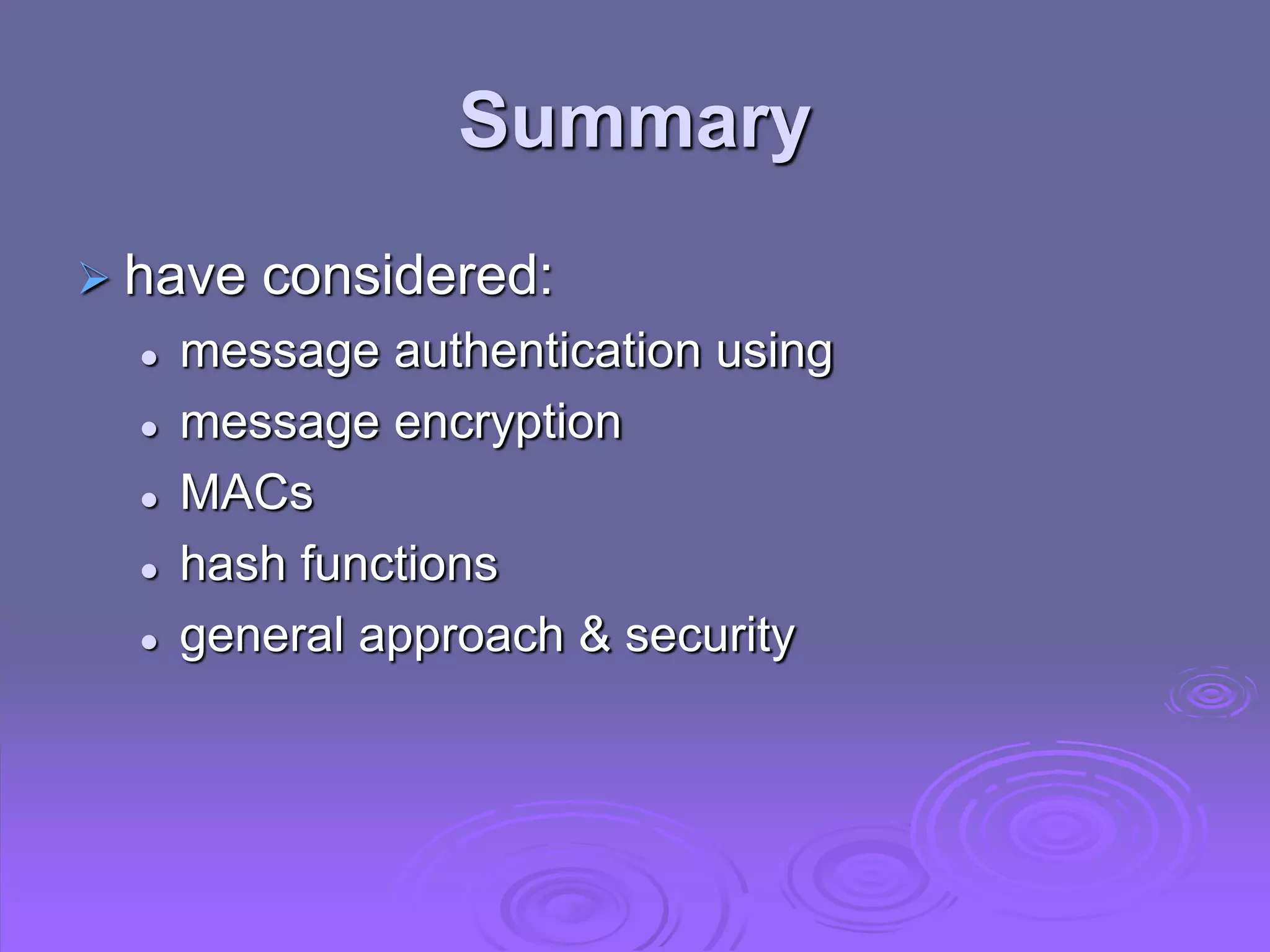This document discusses message authentication techniques including message encryption, message authentication codes (MACs), and hash functions. Message encryption provides authentication if symmetric encryption is used, but public key encryption only provides authentication if the sender also digitally signs the message. MACs provide assurance that a message was not altered and came from the sender by appending a cryptographic checksum. Hash functions condense messages to a fixed size in a way that makes finding collisions difficult. Both MACs and hash functions need to be sufficiently large, like 128 bits or more, to be secure against birthday and other attacks.
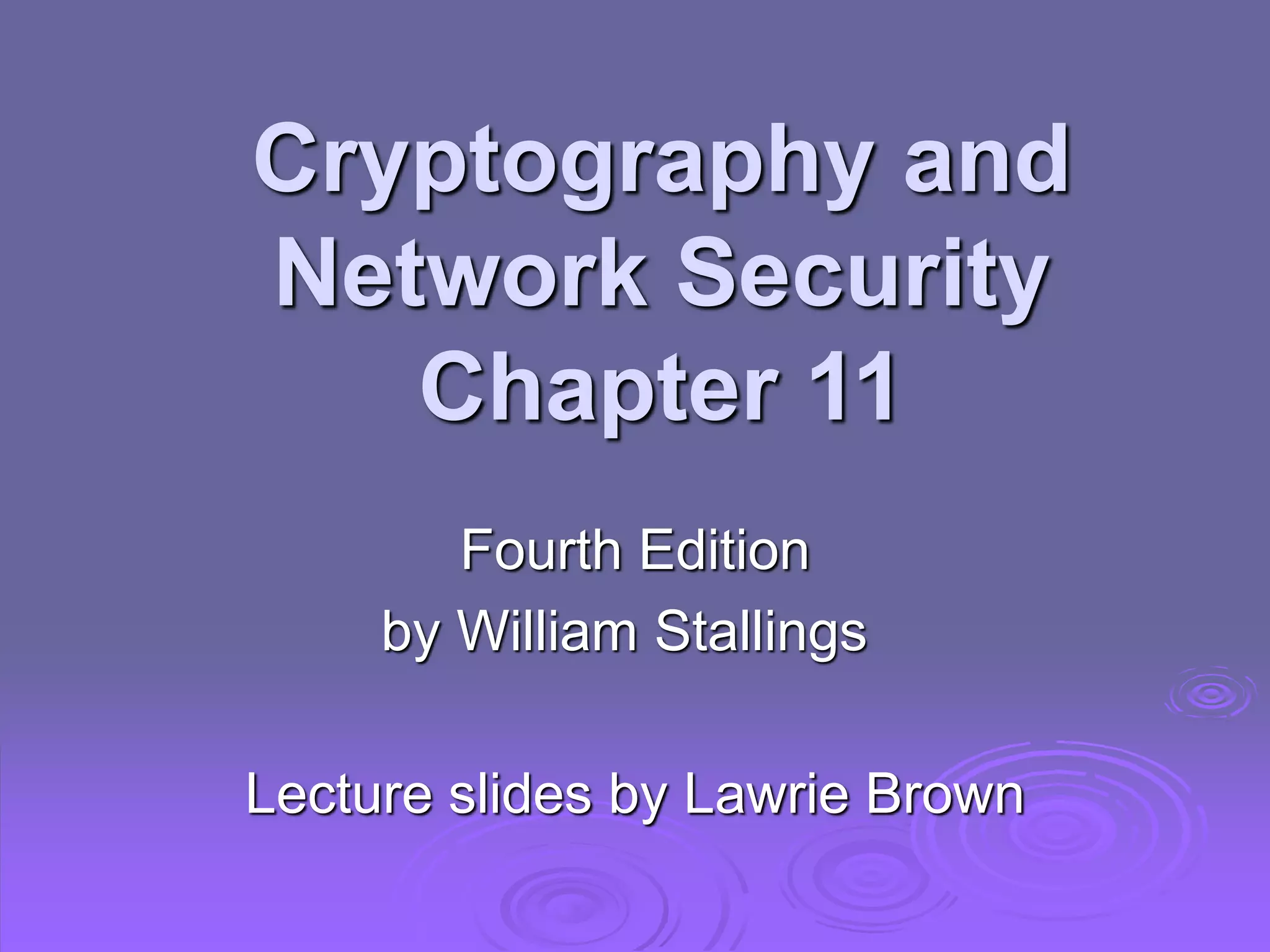
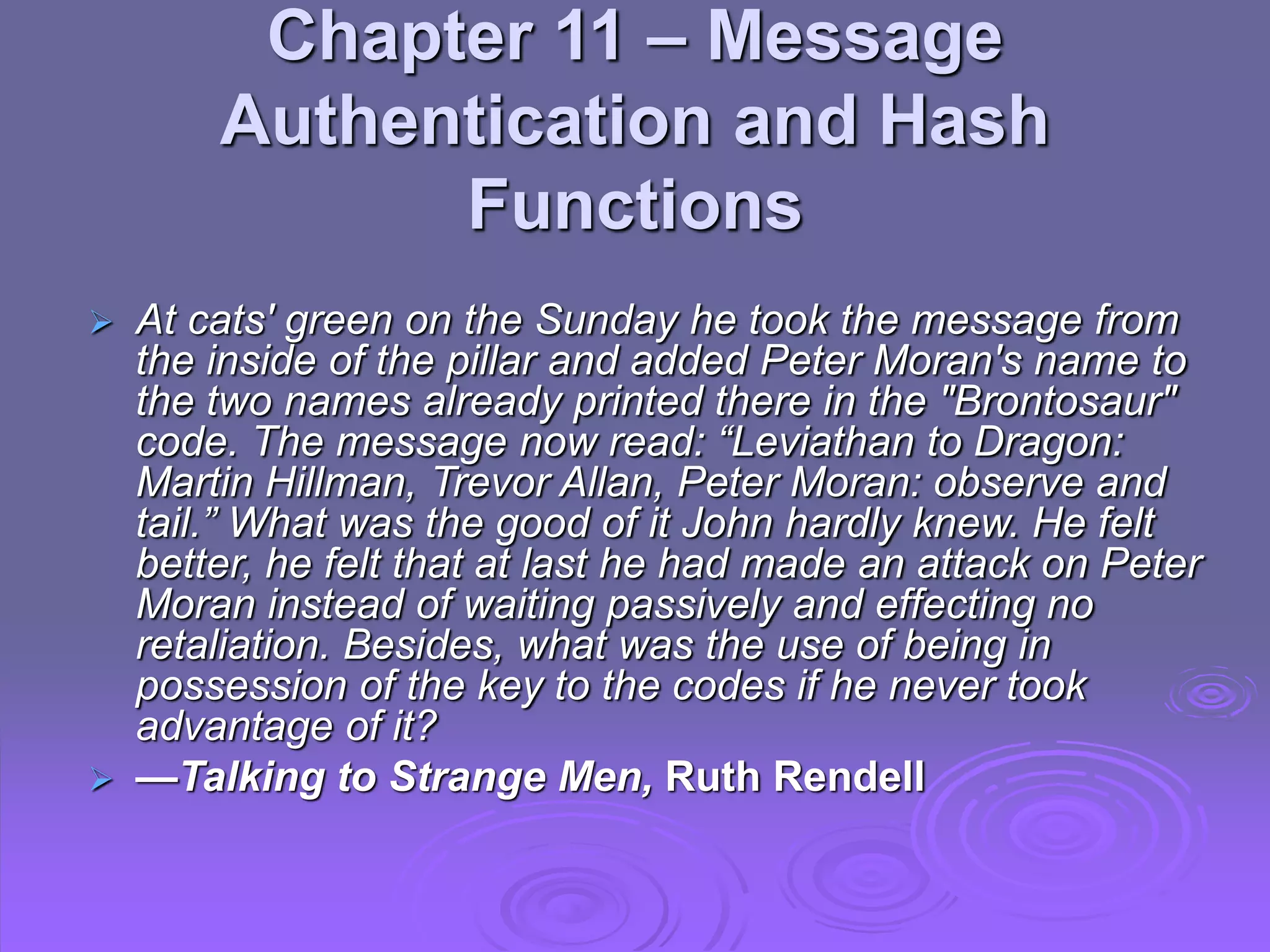
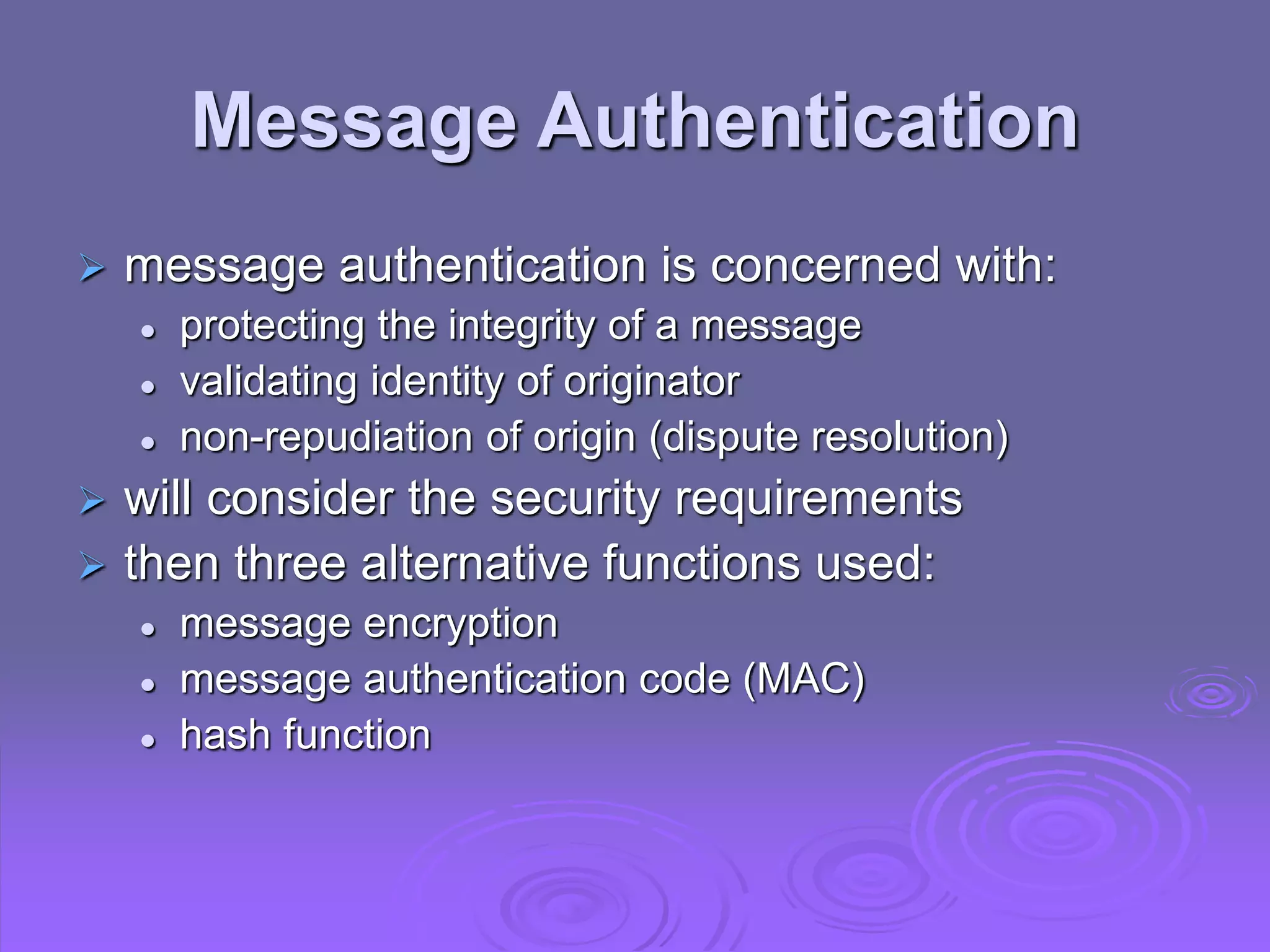
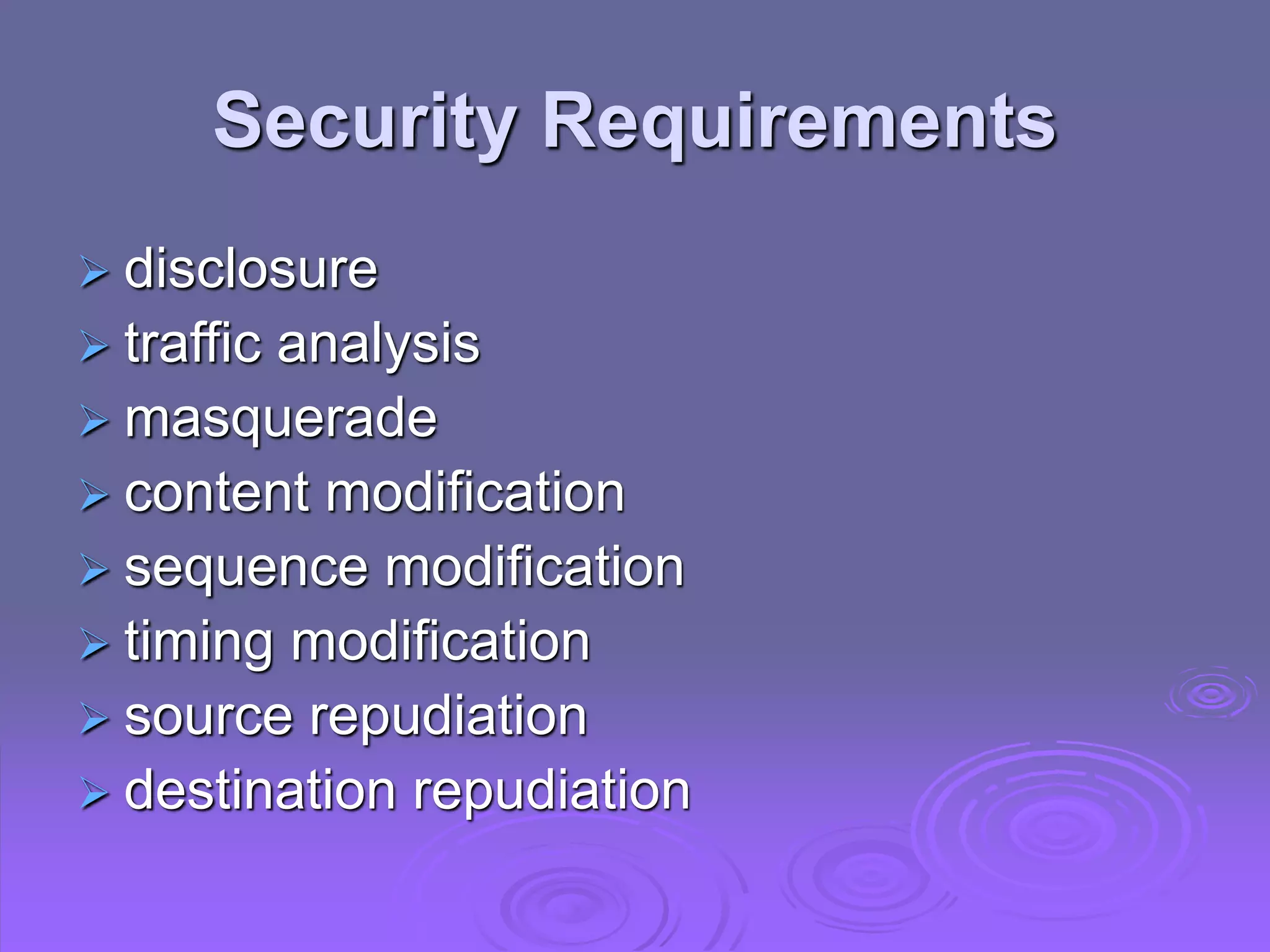
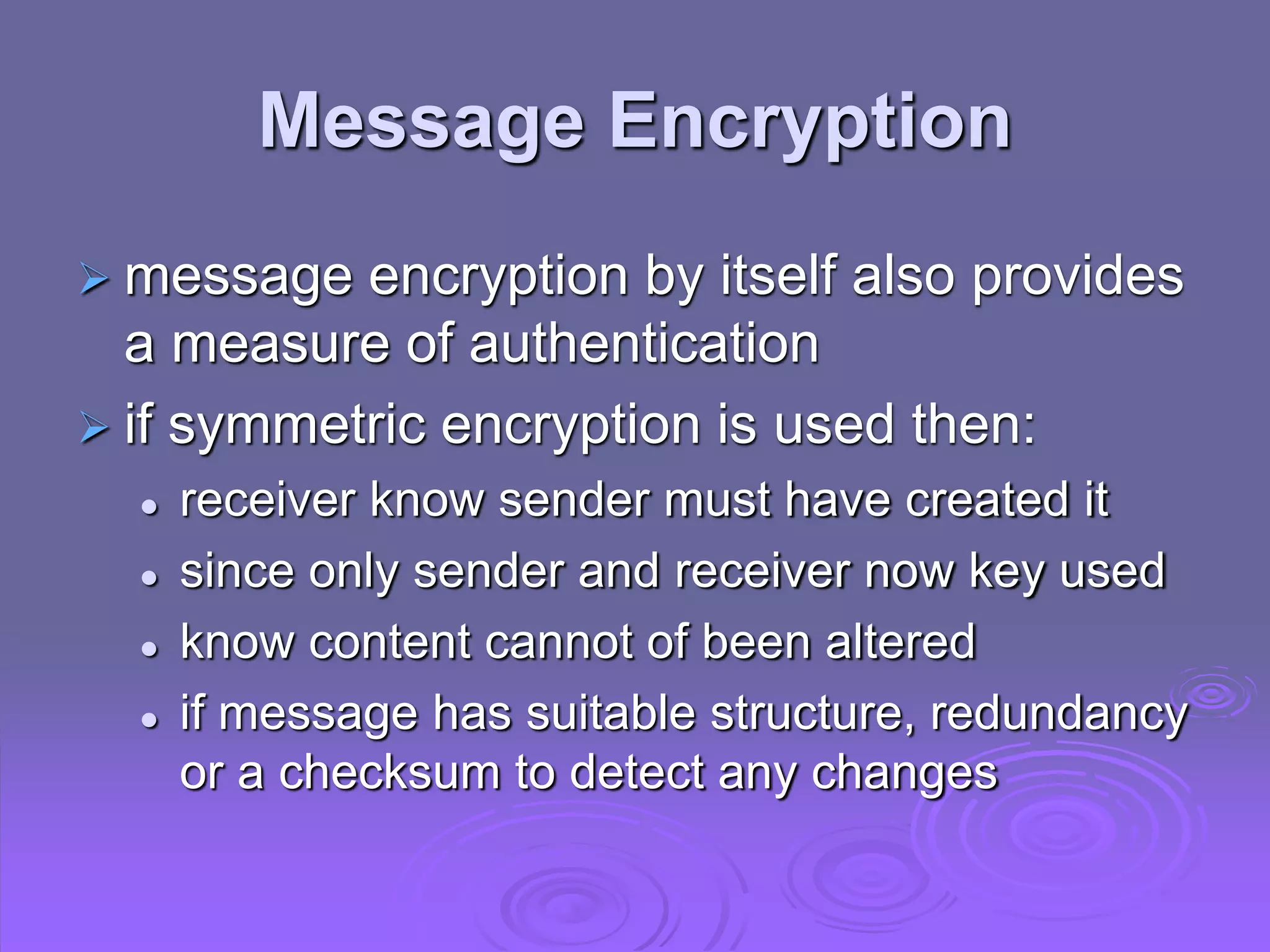
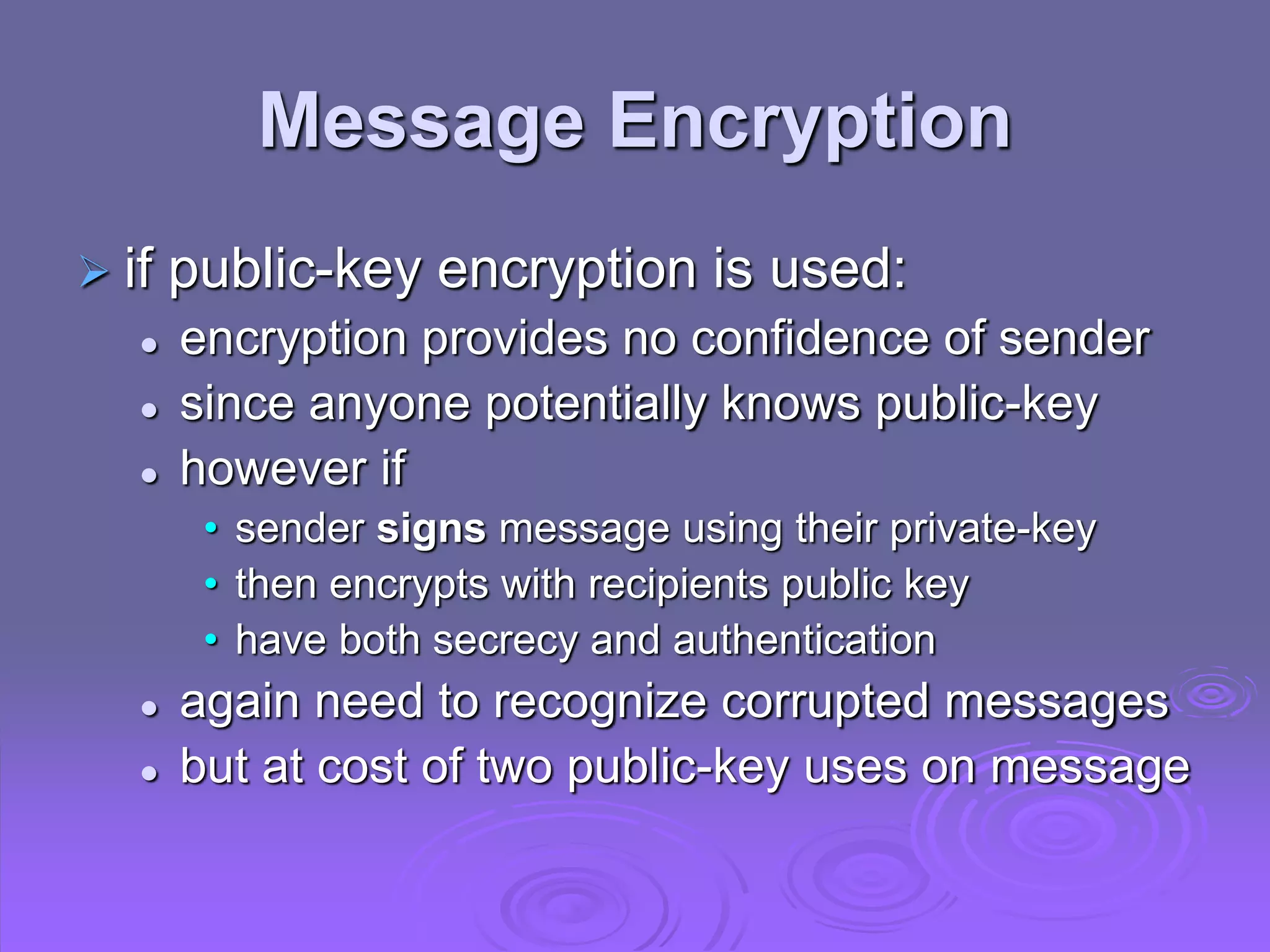

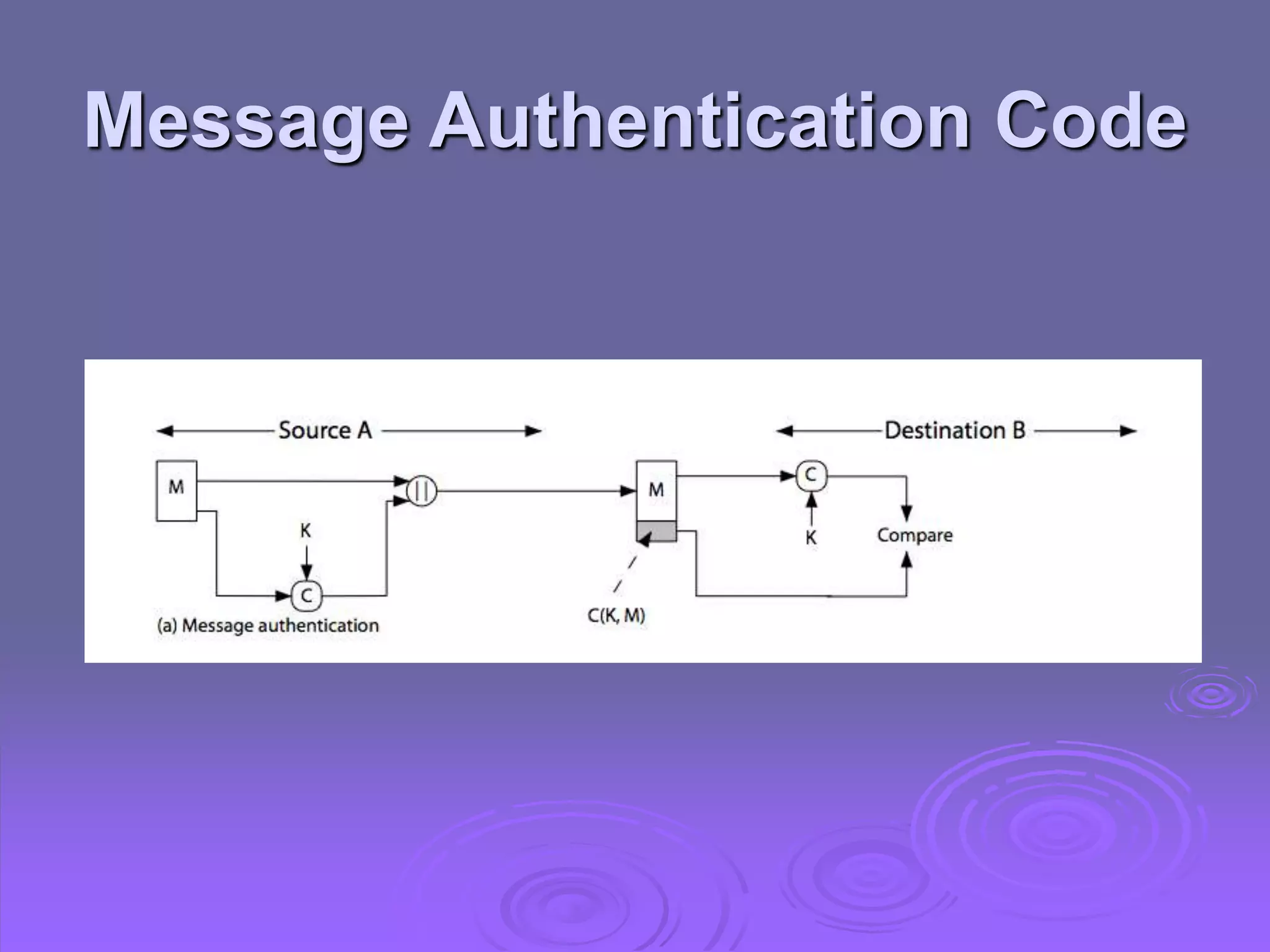
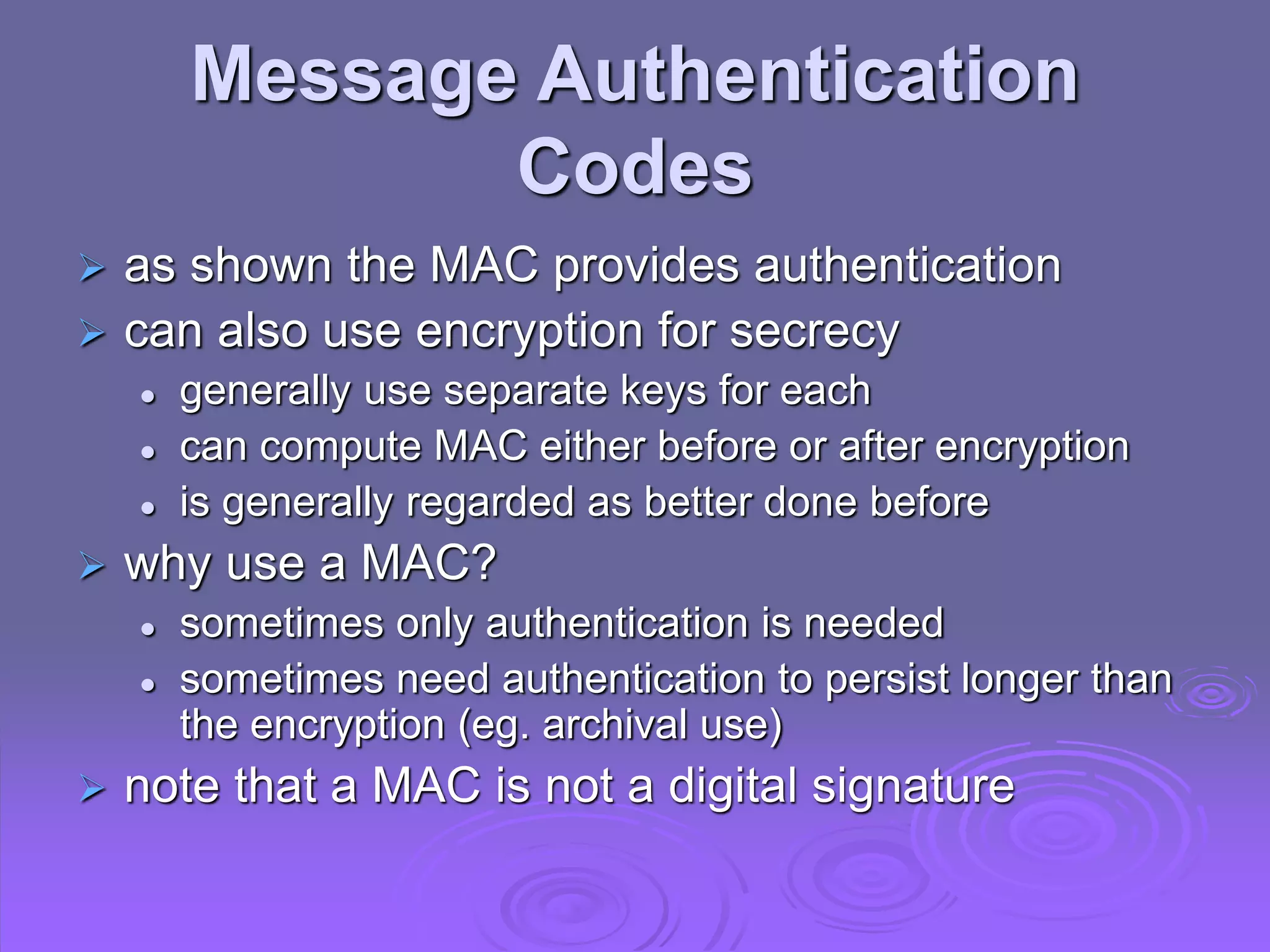
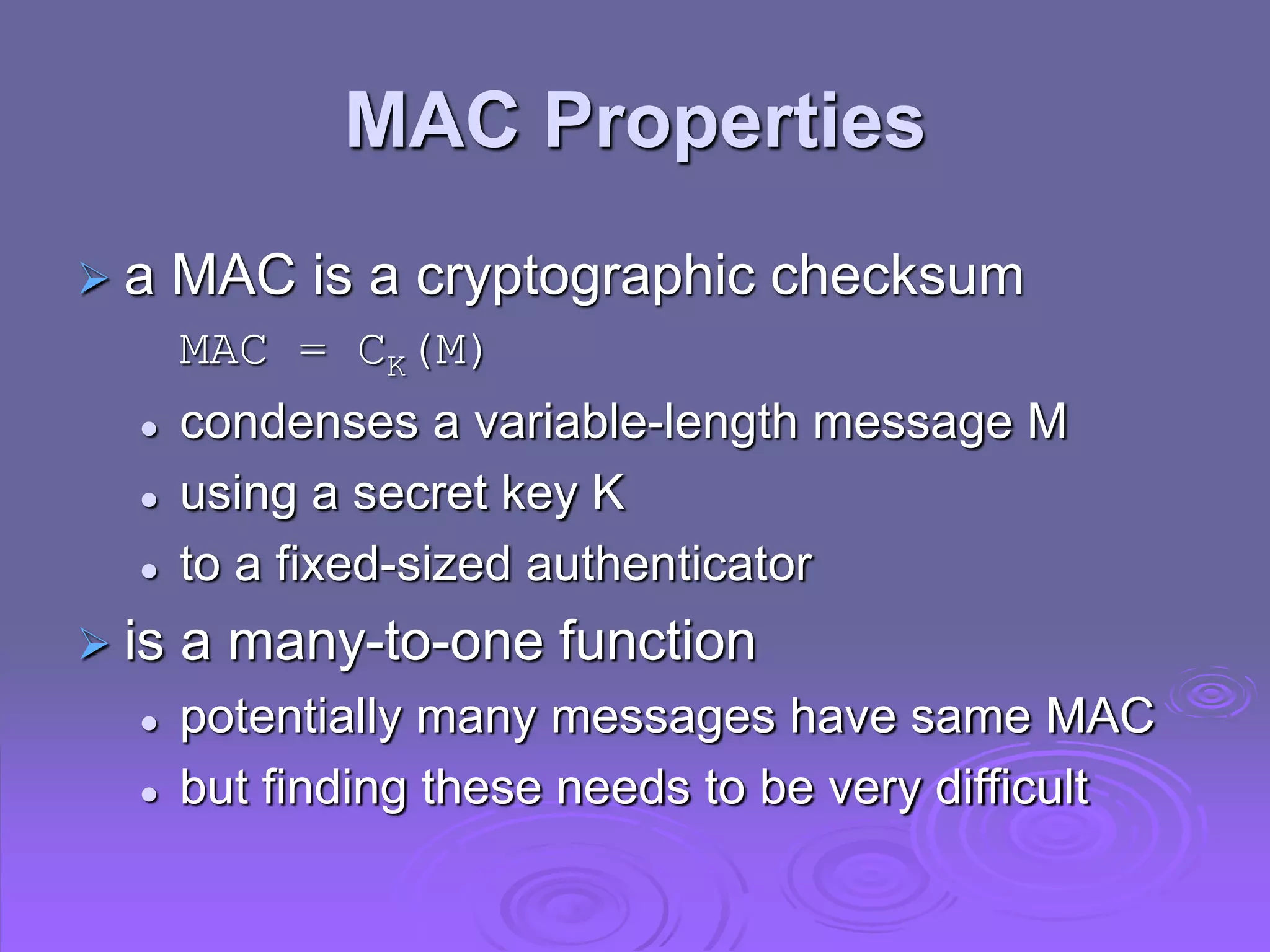
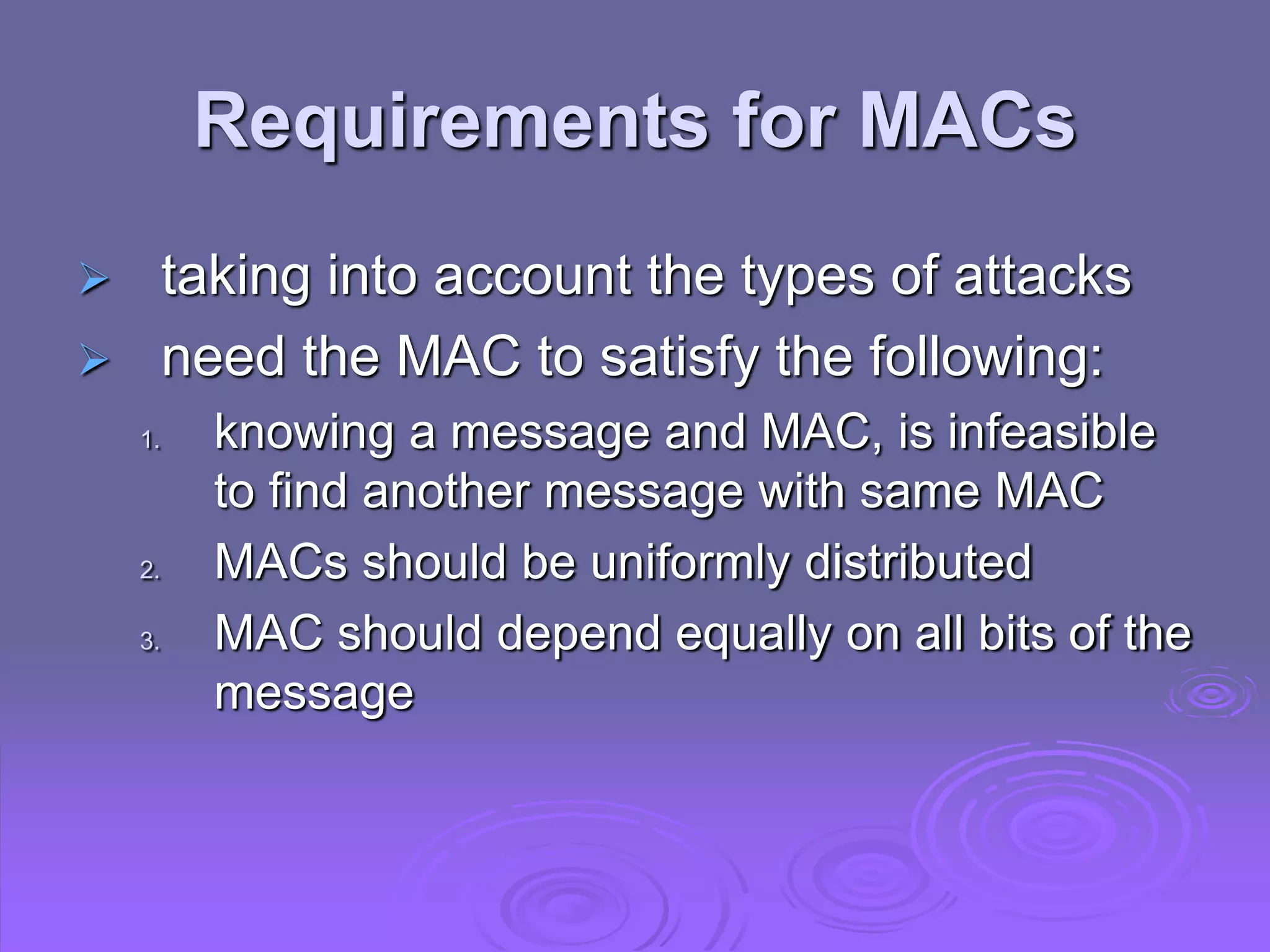
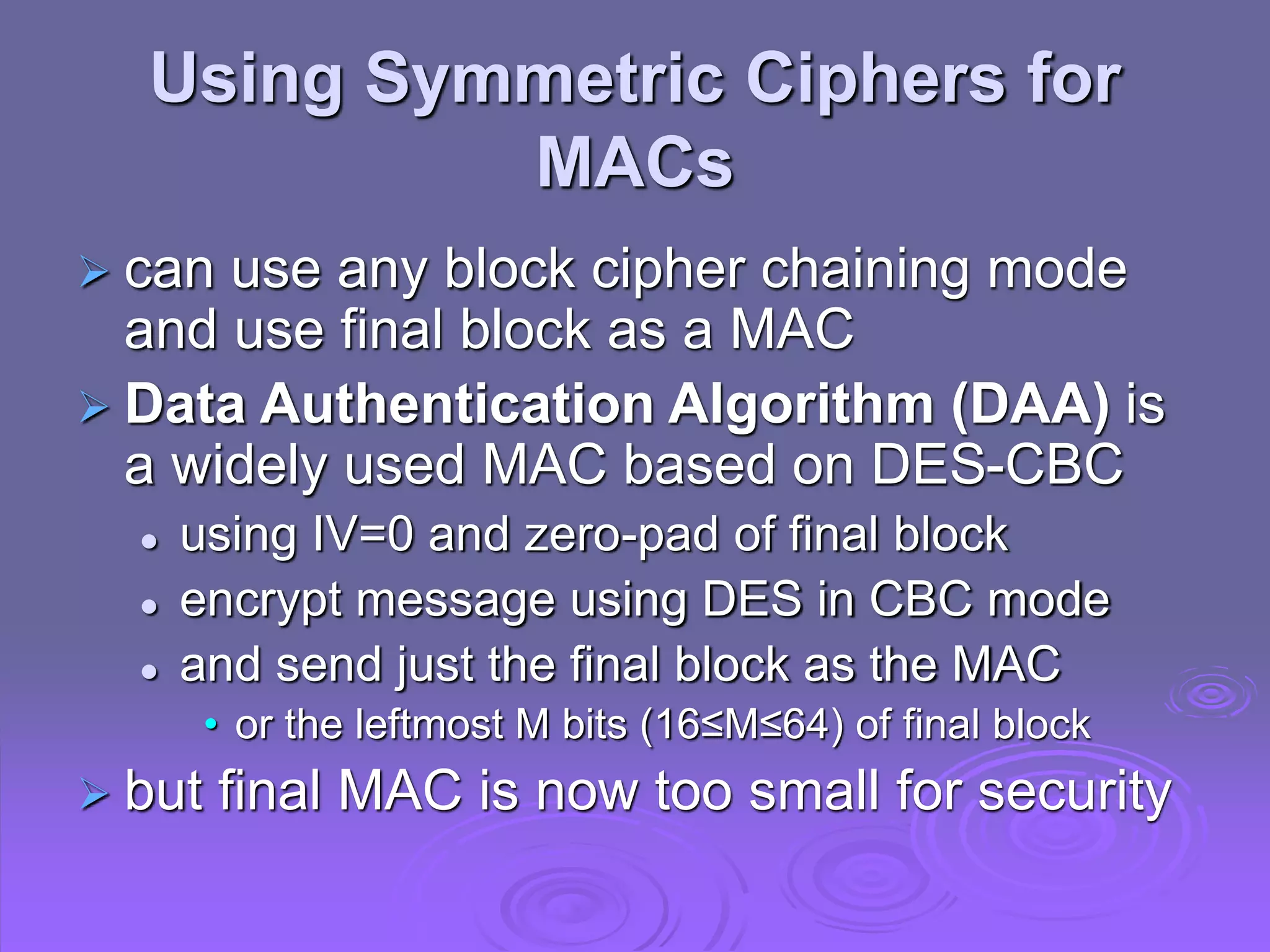
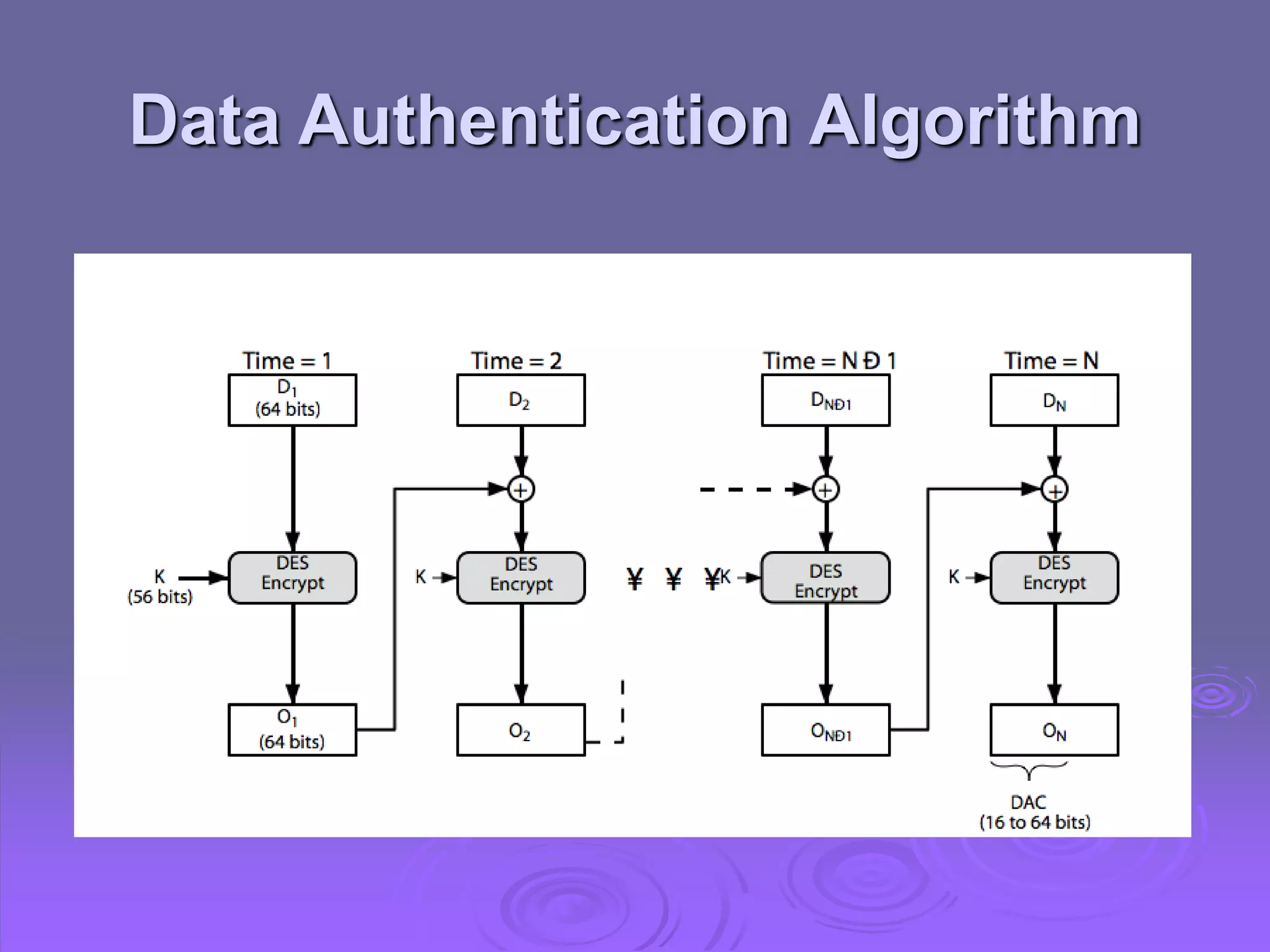
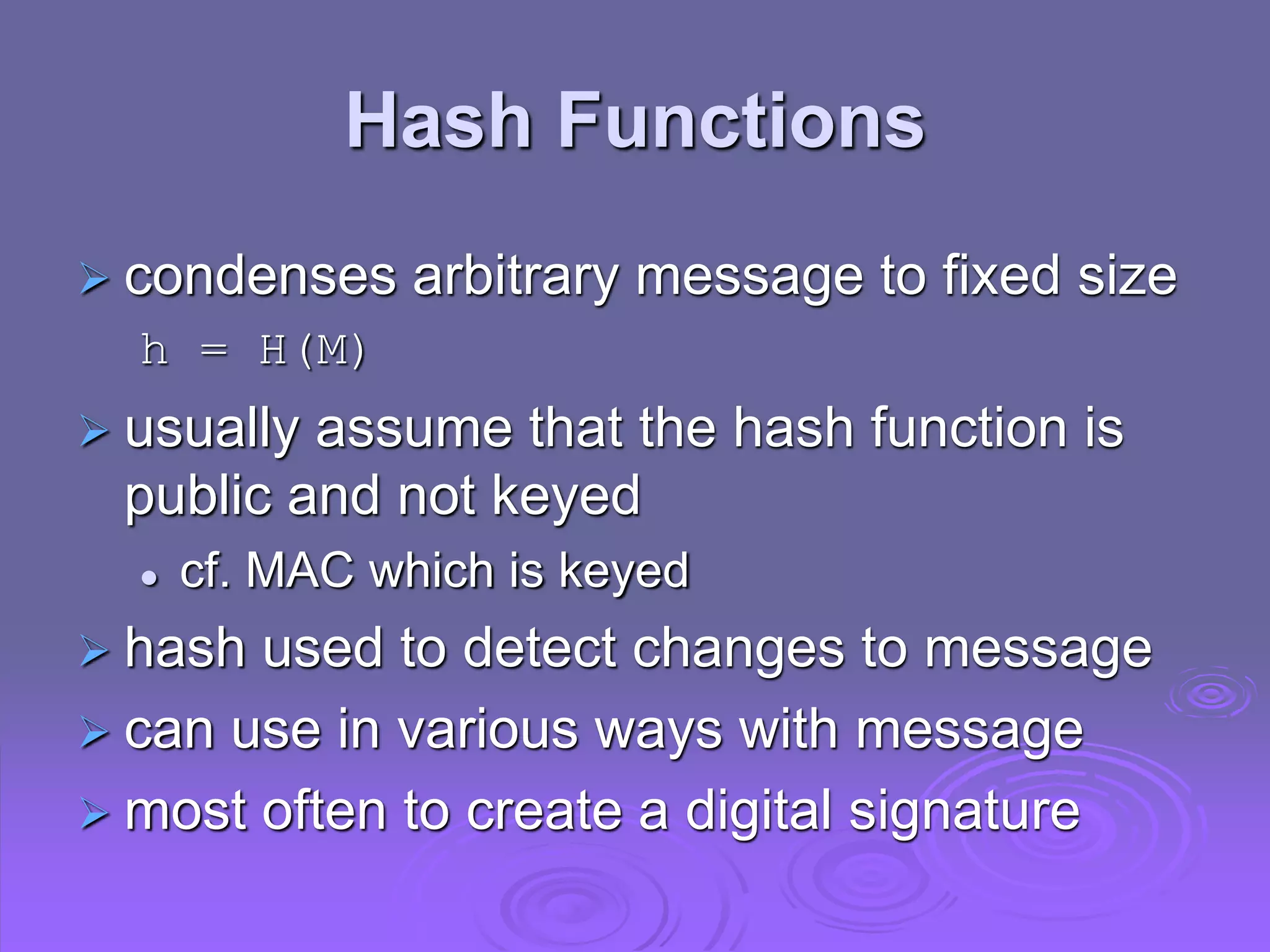


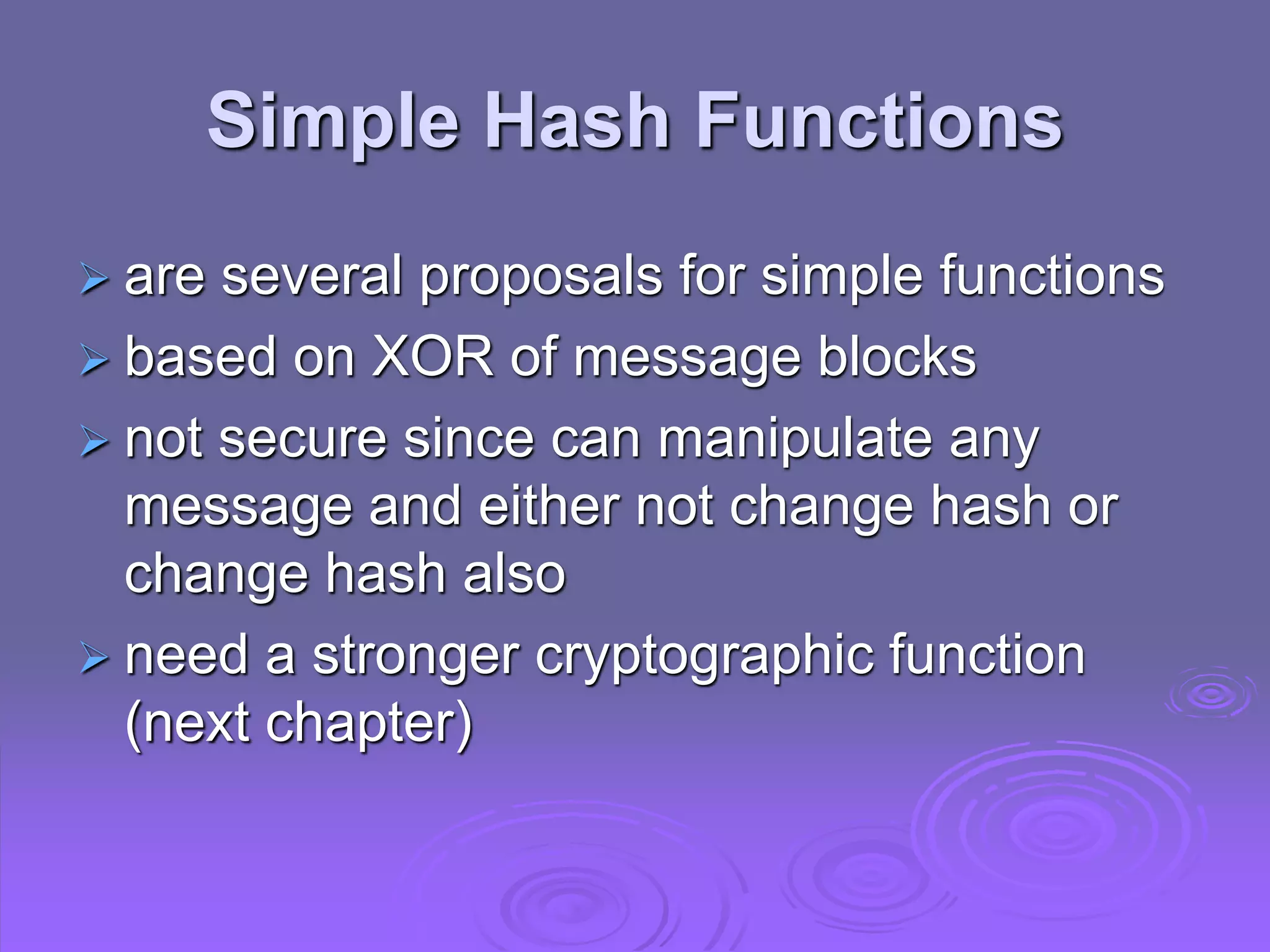
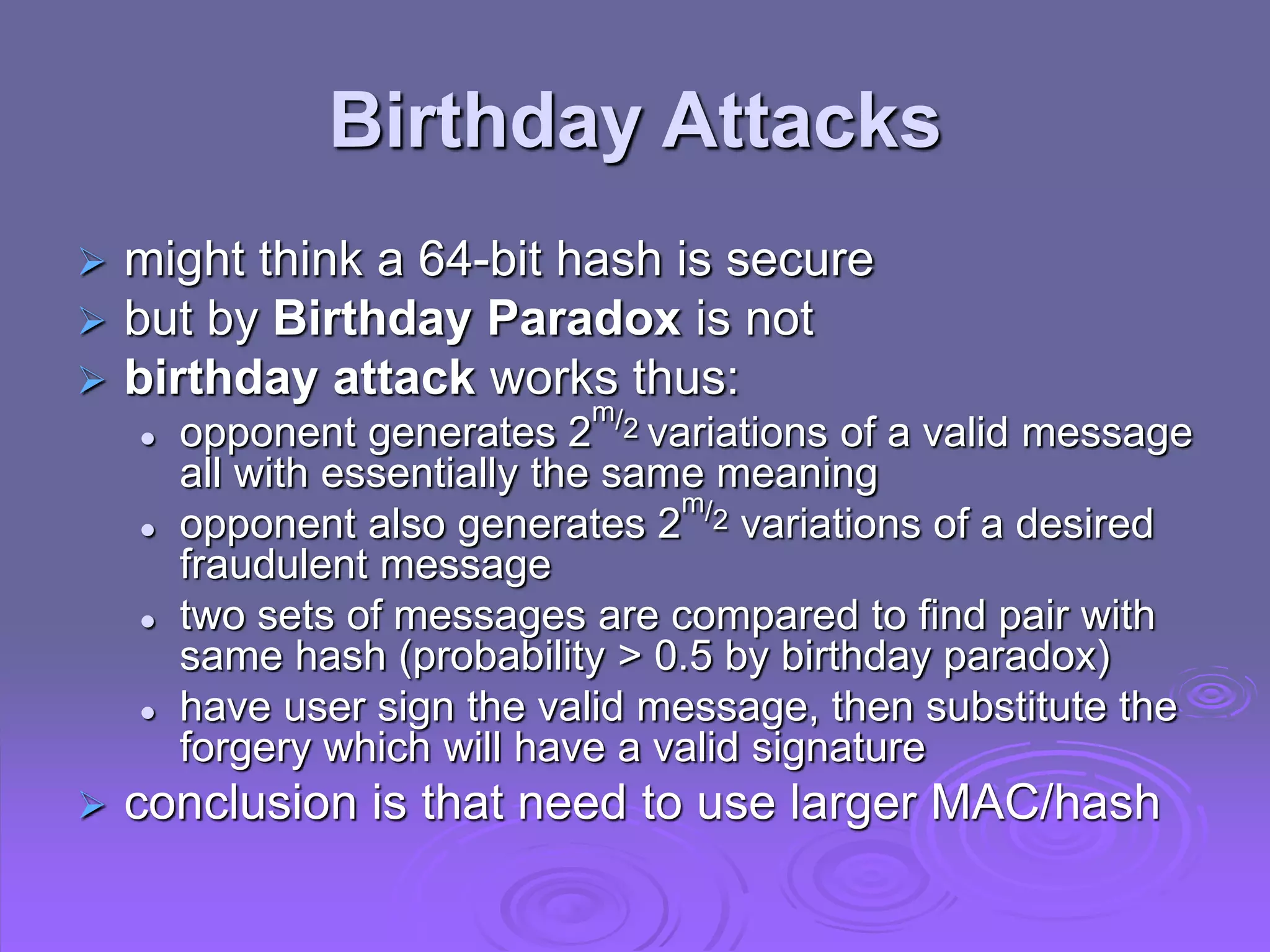
![Block Ciphers as Hash
Functions
can use block ciphers as hash functions
using H0=0 and zero-pad of final block
compute: Hi = EMi
[Hi-1]
and use final block as the hash value
similar to CBC but without a key
resulting hash is too small (64-bit)
both due to direct birthday attack
and to “meet-in-the-middle” attack
other variants also susceptible to attack](https://image.slidesharecdn.com/ch11-221104150329-c680a6d1/75/ch11-ppt-19-2048.jpg)
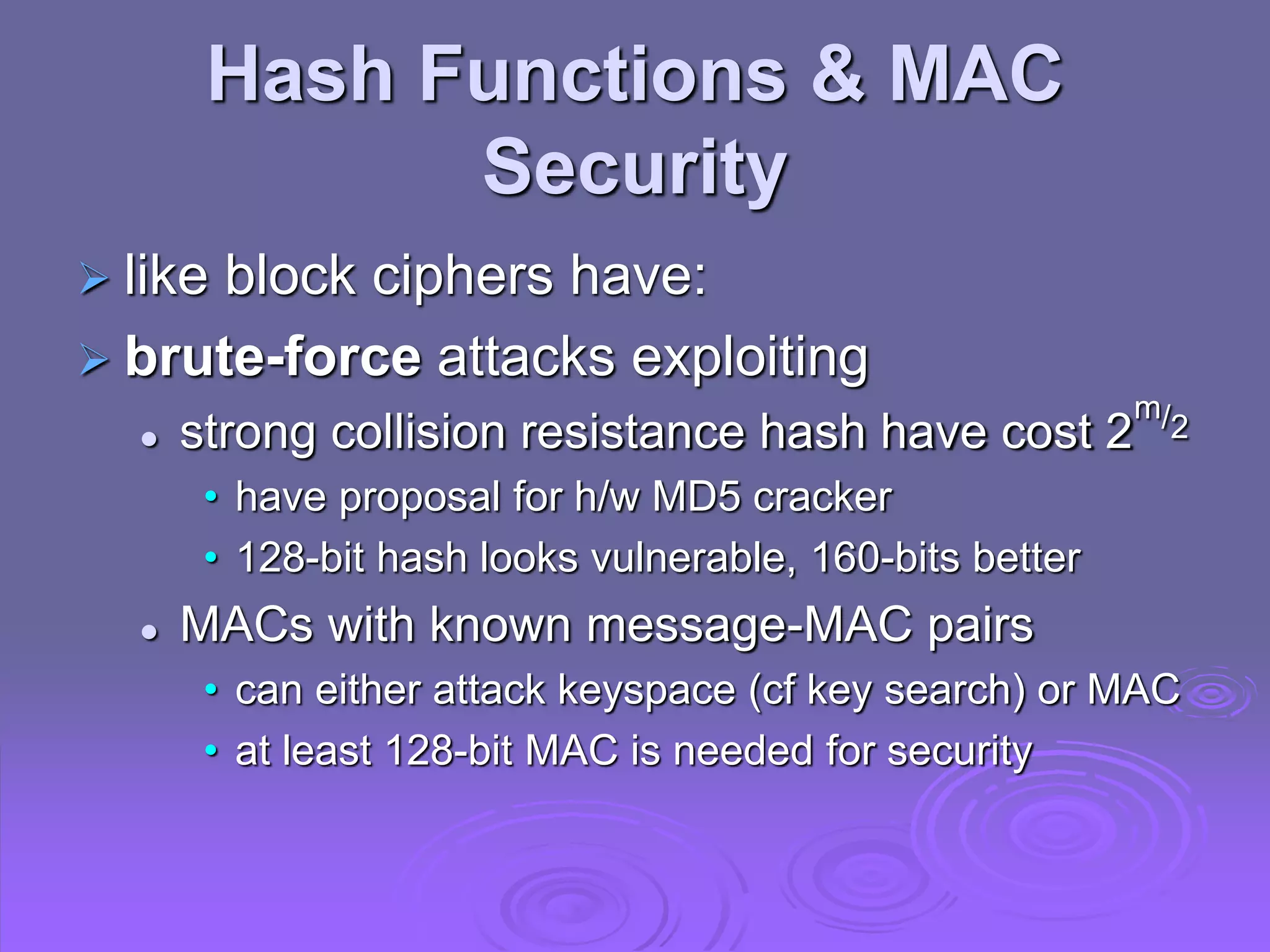
![Hash Functions & MAC
Security
cryptanalytic attacks exploit structure
like block ciphers want brute-force attacks to be the
best alternative
have a number of analytic attacks on iterated
hash functions
CVi = f[CVi-1, Mi]; H(M)=CVN
typically focus on collisions in function f
like block ciphers is often composed of rounds
attacks exploit properties of round functions](https://image.slidesharecdn.com/ch11-221104150329-c680a6d1/75/ch11-ppt-21-2048.jpg)
